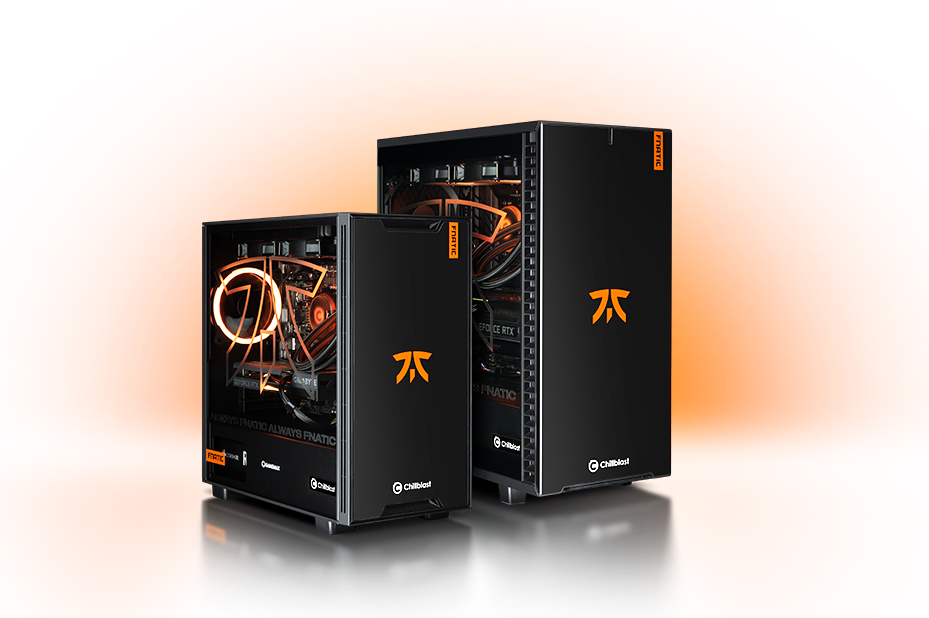Computex 2022 has been and gone, and though it wasn’t the big dramatic show it’s been in the past with heaps of major announcements, debuts, and releases, it did have some interesting new tech on show.
AMD kicked things off with a big unveil of its new Zen 4 CPUs which are looming over the horizon with promises of big leaps in performance in a wide range of games and applications. Nvidia teased a greater focus on AI technologies and showed off how it’s improving environmental efficiency in the datacenter, and Intel… wasn’t there at all.
Still, those big three chip makers weren’t the only companies making a splash at Computex 2022. So, let’s take a look at all the big announcements, what they mean for their respective industries, and when we might start to get our hands on these new products.
AMD: It’s all about the CPUs at Computex 2022
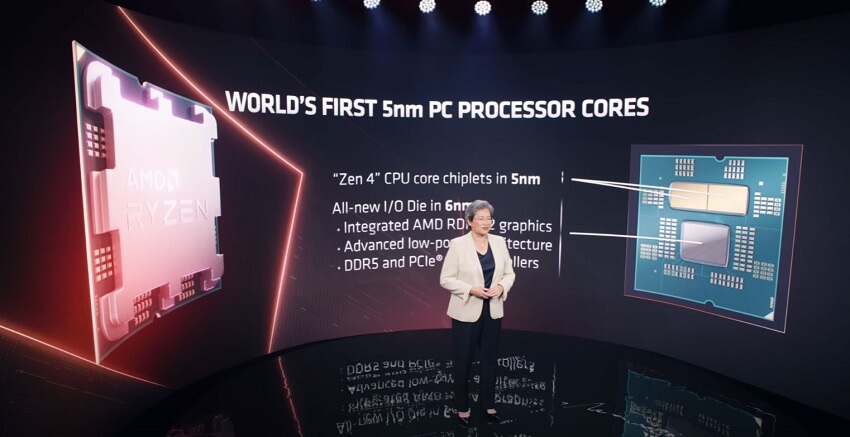
AMD took full advantage of Intel skipping Computex by showcasing a new range of high-end CPUs. Zen 4 is its next-generation architecture and it’s set to power an entirely new generation of Ryzen 7000 processors later this year.
This is a revolutionary, rather than evolutionary generation of CPUs, because for the first time in over five years, AMD is moving to a new socket. Ryzen 7000 will switch up the pin grid array (PGA) CPU design, where the pins are on the processor, to a land grid array, where the pins are on the motherboard.
This means moving to a new socket: AMD’s AM5. So, while AMD fans of recent years have had a clear upgrade path through various CPU generations, Ryzen 7000 will mean a new motherboard for anyone who wants to take it on.
It’ll mean new memory too, as AMD confirmed Zen 4 will exclusively support DDR5 at launch. That means more performance, but it could mean higher costs if prices of the new-generation memory don’t come down in the next few months.
Still, the performance of Ryzen 7000 could be enough to tempt many to become early adopters of this next-gen design.
AMD promises a doubled L2 cache (1MB per core), higher clock speeds (up to 5.5GHz all core), and improved instructions per clock, leading to an overall single threaded performance increase of at least 15 percent. It may be 40 percent greater in more multi-threaded workloads too, with hints of clock speeds even reaching up to 5.8GHz on some samples in limited thread scenarios, like gaming.
AMD’s keynote felt like a shot across Intel’s bow, and should put to bed any inclination that the existing 12th generation Alder Lake processors will compete favourably with Zen 4.
Good thing Raptor Lake is around the corner.
Where was RDNA 3 at Computex 2022?
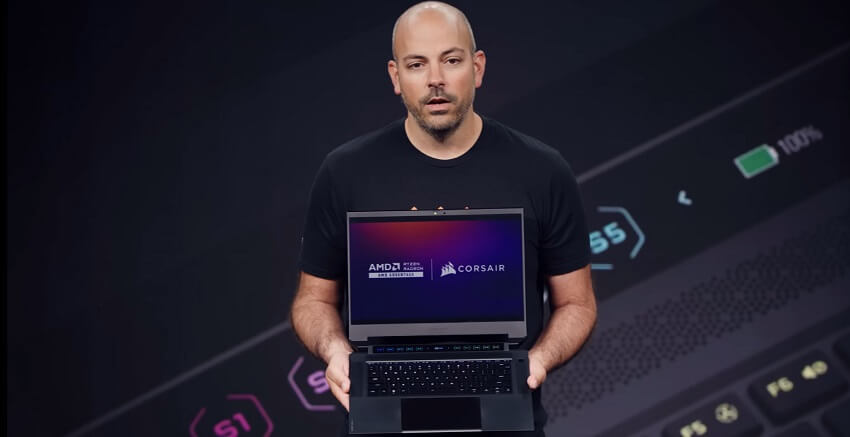
AMD’s other looming technological advancement is its next-generation RDNA 3 graphics, also expected to show up in the latter half of 2022. There are hints and rumours that it could more than double the performance of the previous AMD flagship, the 6900 XT, so there is a lot of excitement around the next-gen design.
But AMD didn’t even whisper its name at Computex 2022, so we’ll be waiting a while longer to find out what the rumoured 7900XT and its contemporaries can do.
What AMD did show on the graphics front was a little more RDNA 2. While that’s not exactly groundbreaking, it did come in a new and unique guise: onboard every single Ryzen 7000 processor.
Unlike generations past, where AMD exclusively bundled onboard graphics with its accelerated processing unit (APU) designs, every Zen 4 CPU will have at least two RDNA 2 GPU cores. That won’t be enough for modern gaming, but it’ll be enough for watching videos, browsing the web, or doing office work, making Ryzen 7000 much more attractive for lightweight office PCs down the line.
For enthusiasts, it also makes troubleshooting GPU issues much easier, as you won’t need a dedicated graphics card just to get the system up and running.
There were a few showings of more impressive AMD graphics, though only in mobile form.
Corsair showed off its first gaming laptop, called the Corsair Voyager a1600 AMD Advantage Edition. While that’s a mouthful, the specs are equally grandiose. They include one of several AMD Ryzen 6000 mobile processors and an AMD Radeon RX 6800M GPU, plenty of RAM, and a range of storage options.
There were a few other showings too, suggesting AMD is hoping to make a bigger push for laptop gaming in 2022.
Nvidia at Computex 2022: Datacenters and not much else
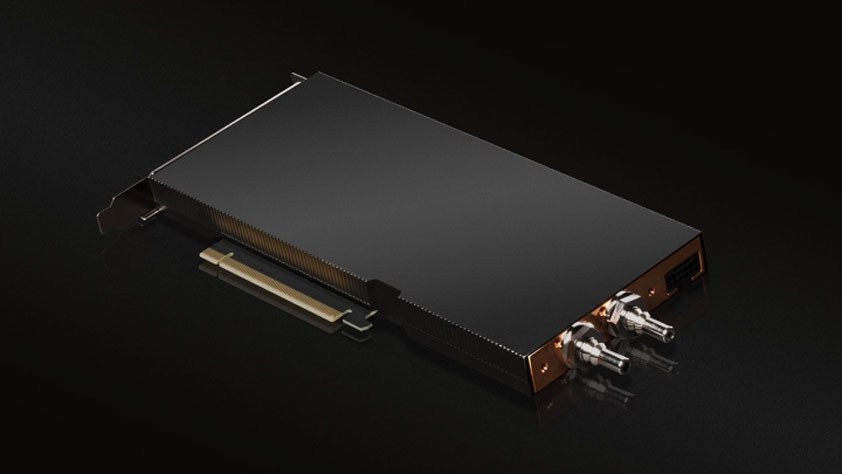
Nvidia didn’t take advantage of AMD’s lack of GPUs to assert its continued dominance in the gaming PC space, and instead focused on its increasingly more lucrative ventures: AI and datacenter developments.
It showcased an ultra-powerful 144 core Grace superchip CPU that’s designed to supplant the existing AMD/Intel paradigm in the server marketplace. It’s partnered with a number of manufacturers, including Asus, Gigabyte, and SuperMicro, to launch off-the-shelf servers which should be both faster and more efficient than anything AMD and Intel can offer.
It’s not coming until 2023, though, so there’s enough time for a new generation of Xeons and Epycs to sneak in there to offer more credible competition.
Still, Nvidia’s design is impressive. It combines two of Nvidia’s Grace CPUs on a single die, giving them an unheard-of 144 cores and almost 400MB of on-chip cache. The processor is designed to handle AI workloads and to manage enormous databases, so could find particular use amongst some of the larger social network and retailer datacenters around the world.
Elsewhere, Nvidia also highlighted a new watercooling initiative on its A100 datacenter GPU. This design, based on its Ampere architecture, is already fast, but it could run faster still under water. That’s not why Nvidia has designed a watercooled version, though.
Using water to cool the GPUs reportedly uses far less energy than the mix of air and evaporative cooling that typically manages datacenter temperatures, thereby making them far more efficient and environmentally friendly.
With as much as 0.5% of the world’s electricity use tied up in datacenter cooling, this could have a significant impact on global energy usage long-term.
Asus makes the fastest gaming monitor

How fast is your gaming monitor? Chances are it’s at least 120Hz, as having a high refresh gaming monitor can make a real difference to your games – it’s arguably a better upgrade than raising the resolution. But I can guarantee it’s not as fast as Asus’ latest design.
Shown off for the first time in a randomly-placed promotional spot during Nvidia’s keynote, Asus’ new ROG gaming monitor will have a staggering 500Hz refresh rate. Considering the previous best was a mere 360Hz, that’s quite a leap.
It’s a 24-inch, 1080p display that targets professional and serious-amateur gamers, promising the most responsive gaming experience possible in 2022. It has G-Sync baked in, and full support for Nvidia’s Reflex Analyzer so you can both see the difference between different refresh rate modes, and make sure you have it dialled in how you like for the best responsiveness.
All of that is great for those who want the absolute fastest display possible for the greatest possible in-game advantage. Compared to a 360Hz display, though, the difference is going to be pretty negligible. Even Nvidia’s very slow-motion explainer video doesn’t showcase an enormous difference between 240Hz and 500Hz, so we’re probably talking shaving only a few extra milliseconds off your reaction time.
It’s better than not shaving off those milliseconds, but expect the price on this monitor to be high, and the potential return on your investment to be very limited.
Wi-Fi 7 will bring more bandwidth than you know what to do with

If you have some of the fastest internet speeds in the country, then you’re probably already running a Wi-Fi 6 or Wi-Fi 6E router in order to take full advantage of it. But if you still find that you wish your downloads happened that bit faster, or you could transfer data that bit quicker across your network, Mediatek is already gearing up for something better.
Following Qualcomm’s unveiling of its Wi-Fi 7 chips at Mobile World Congress 2022, Mediatek debuted its Wi-Fi 7 chips at Computex 2022, promising speeds up to 36Gbps when using all five bands simultaneously – far more bandwidth than anyone can really make use of outside of professional scenarios.
If you could ever get an internet connection to match that, you’d be downloading some of the largest games in the world in just a few seconds, and at that point you’re going to be more limited by what your CPU can unpack and your storage solution can install.
More speed is always welcome, though, and there will be some niche settings that can take advantage of such a massive leap in bandwidth over the already-impressive Wi-Fi 6E. But this still feels like a leap into the territory of the unnecessary. Gigabit Ethernet is still the most common wired solution in the UK, and although there are many tentative rollouts of 2.5Gb Ethernet happening across multiple industries, it’s still far from commonplace – the number of Wi-Fi 6E wireless devices is still limited, too.
Wi-Fi 7 will no doubt find increasing use in the years to come, and isn’t set to really land at all in any kind of products until 2023. But it feels like the size of data we actually need to transfer is falling behind the size of the ‘pipes’ we can send it through.
PCIE 5 SSDs are coming
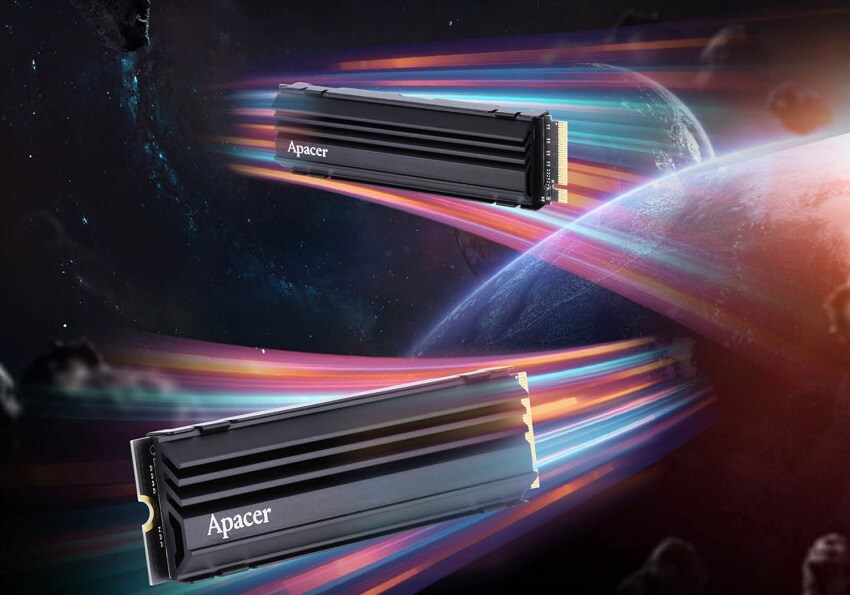
PCIExpress 5 debuted alongside Intel’s Alder Lake processors in the latter months of 2021, but it’s only now that we’re actually starting to see hardware that can make the most of it. While PCIE 5 graphics cards are still over the horizon, Computex 2022 saw the debut of the first PCIE 5 SSDs.
Both Apacer and Zadak debuted PCIE 5 SSD designs with incredible specifications that if matched in real-world performance, could lead to big leaps in device performance and will continue to move us towards a time where game loading screens really are a thing of the past.
Both the Apacer AS2280F5 M.2 PCIe Gen5 x4 SSD and Zadak TWSG5 Gen5 X4 SSD promise sustained read/write performance of 13,000/12,000 MBps respectively. That’s close to double the fastest read and write speeds of the best PCIE 4 SSDs.
Both drives will come in a range of capacities and will have bolted-on heatsinks to ward off the heat generated by such blistering-fast data transfers. They will both support PCIE 4 slots too, though you’ll only get the flagship performance on a PCIE 5 motherboard with a supporting CPU.
That means at least Alder Lake, but in just a few months you’ll also be able to make the most of these new drives on Ryzen 7000 and Raptor Lake platforms too. With those two looming CPU generations, expect many more storage manufacturers to launch their own PCIE 5 SSDs in the coming months.
Chillblast TL:DR
Too Long… Didn’t Read
Although Computex 2022 was a little uneventful compared to events past, it still had plenty to get excited about. AMD’s showcase of a 5.5GHz+ clock speed on Zen 4 was a big warning shot to Intel that suggests its dominance as the clock speed kings could be coming to an end. Nvidia didn’t exactly blow the doors off anything, but it does continue to highlight that team green is really moving its focus away from gaming and may become much more an AI company in the years to come, with less of an interest in developing its gaming divisions.
Elsewhere there were some fun announcements, but all of it felt more like a tease for what’s to come in the next six months than something to rush out and buy right now. That’s not necessarily a bad thing, though. It leaves us excited for what’s to come in 2022, as we edge towards more major launches from some of the biggest companies in Q3 and Q4.




